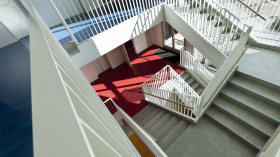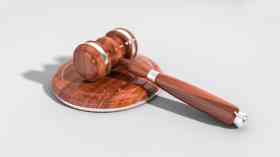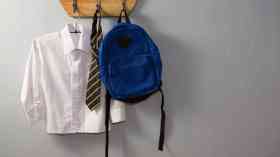Student safety before, during and after school
 The issue of security in schools is as important today as it ever has been. The safety and wellbeing of schoolchildren is a front that school staff and parents can unite on; amidst new security concerns, student safety is being pushed further up the agenda.
The issue of security in schools is as important today as it ever has been. The safety and wellbeing of schoolchildren is a front that school staff and parents can unite on; amidst new security concerns, student safety is being pushed further up the agenda.
An apparent escalation in the levels of bullying and violence, coupled with newly emerging safety threats such as terrorism recruitment, has led to an increasing need for improved security measures in schools and colleges. Recent high profile incidents, such as the London schoolgirls who absconded to Syria, have highlighted the need for schools to protect their students before, during and after the school day.
Whilst private security solutions in schools is not a new concept, there is still much debate over its effect on the learning environment. The use of CCTV in schools, for example, has been widely debated, with a particular focus on the issue of civil liberties. However, in light of recent incidents, more schools are adopting secure learning environments to increase the confidence of parents, staff and students alike.
Before school security
With such a transient population of staff, students and suppliers moving through the school gates every morning, the first security measure that should be considered is physical access to the school grounds. Access to the school grounds can be controlled using a variety of solutions, with the most effective using a combination of access control measures.
Access can be controlled in the first instance by having secure perimeter fencing with sufficient height and strength, climbing impediments and secure ground fixing. A secure perimeter will ensure that visitors to the premises can only gain access through designated gateways which can be monitored so that only authorised visitors can gain access.
Gateways can be monitored using the presence of a staff member, or increasingly, the use of security officers to deter unauthorised access and provide a point of enquiry for visitors.
Uniformed security officers can provide support to teaching staff during these particularly busy times of the school day, deflecting some of the enquiries, dealing with deliveries and escorting trespassers off the premises.
Once through the school gates, access to the internal buildings can be controlled using access control systems, providing automated entry to authorised individuals and denying access to any unauthorised visitors.
Access control systems consist of three key components known as the physical barrier, the identification device and the door controller software. The physical barrier usually consists of a door secured with a magnetic or strike lock and turnstiles or speed gates which limit access to the premises to one person for one card presented. The identification device provides authorised individuals with a method for gaining entry through the physical barrier, usually in the form of Radio Frequency Identification (RFID), smart card and reader, swipe card and reader or PIN entry pads. Door controller software makes the decision on who can gain access, through which entry point and at which times of the day.
During school security
Access control technology can also be used during school hours to limit the access of unauthorised persons to certain specific areas of the site such as science laboratories, IT suites and offices, to protect schoolchildren and staff.
The use of CCTV in the classroom is becoming increasingly common in the wake of incidents such as the tragic murder of school teacher Ann McGuire in her classroom last April. Whilst there has been opposition from anti-CCTV campaigners, the use of surveillance in the classroom is often welcomed by students, staff and parents alike, with a reported 90 per cent of secondary schools in the UK now using them.
Cameras in the classroom can be used to help address and deter a number of day-to-day issues such as bullying, smoking, drug use, theft and violence towards staff. Camera surveillance provides unbiased, impartial evidence which can be used to resolve issues quickly and fairly.
Cameras are also proving a useful tool for teacher training and improving the educational standards of a school. Footage recorded by CCTV cameras can be used by teachers to give feedback to colleagues and to display good practice. One comprehensive school in Salford, Harrop Fold, has seen the percentage of pupils achieving 5 GCSEs at grade A*- C rise from 18 per cent to 52 per cent. Head teacher, Antony Edkins, believes the introduction of surveillance cameras have made ‘a very significant’ contribution to the rise in attainment levels.
Some schools are now employing the services of security officers to help maintain a safe and secure learning environment and to deal with some of the traditional porter duties. The role of security officers in schools has evolved to meet today’s needs, with more private security companies introducing specialist security officers known as ‘safeguarding wardens’. The wardens have experience of working in schools and colleges, giving them an understanding of the types of day-to-day incidents that are likely to occur. Safeguarding wardens can provide support to teaching staff when incidents occur, helping to resolve situations quicker and enabling the teaching staff to return to their lessons.
After school security
Due to the high value nature of equipment often kept in schools, the security of the site when not in use is equally important to consider. To further enhance physical security measures such as perimeter fencing, ground floor rooms can be further secured using security rated locks, security grilles or shutters. The addition of motion activated lighting to physical security measures can further deter would be intruders or vandals.
An alarm system is a key component of any school’s security repertoire and is an essential back up for physical security measures. Alarm systems not only deter intrusions from occurring, but also enable a quick response by security teams or the police in the event of an intrusion taking place. The development in digital technology has drastically reduced the cost of installing an intruder alarm system and the ability to transmit data across existing computer networks, enables end users to install comprehensive systems across multiple sites.
The effectiveness of intruder alarm systems depends on the reliability of the Alarm Receiving Centre monitoring activation signals, both to determine genuine activations and, more importantly, to ensure a quick response. The advent of digital CCTV and video‑over-IP protocols now enable staff in the Alarm Receiving Centre to verify activations remotely through the use of real-time video and audio, drastically reducing the number of false alarms. In fact, many police forces now require verification before they respond, as part of their false alarm management policies.
Equipment Marking
A final consideration for school security is the marking of valuable equipment. Property marking is the permanent identification of goods to deter thieves by providing evidence that links them to the scene of a theft and enables stolen goods to be returned to the owner. Schools are encouraged to protect property such as IT equipment, projectors and televisions by marking the school’s name on them or by using forensic marking technology that works in a similar way to DNA solutions.
Equipment can also be registered to databases so that any recovered stolen goods can be traced back to the owner. Complementing property marking with clear signage on doors and windows will further deter would-be thieves. Choosing the right security solutions will differ from school to school, but it is clear that all schools should be using a combination of measures to ensure the safety of the premises, children, staff and visitors. Obtaining professional advice when assessing security needs can ensure the effectiveness and cost-efficiency of deploying new security solutions. Reputable suppliers belonging to the British Security Industry Association will provide written recommendations, specifications and quotations free of charge and without obligation.
Further information
www.bsia.co.uk
Latest News
28/10/2025 - 09:29
Timeline set for removal of Reinforced Autoclaved Aerated Concrete
27/10/2025 - 14:37
The charter aims to make food education for children and young people a priority and act as a catalyst for change, improving provision in Bristol and beyond.
27/10/2025 - 09:30
Both unions announce formal support of NAHT’s legal action against Ofsted and its proposed new framework.
27/10/2025 - 09:14
A new Child of the North (CotN) report warns that the special educational needs and disabilities (SEND) system faces ‘a worsening crisis’.
24/10/2025 - 10:29
The government has updated its guidance on school uniforms, calling for schools to start limiting branded uniform and PE Kit items ahead of the Children’s Wellbeing & Schools Bill.







